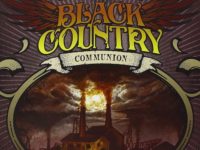When talking about major figures in blues, the conversation is almost guaranteed to include such luminaries as B.B. King, Muddy Waters, Steve Ray Vaughan, Howlin’ Wolf, Robert Johnson, Koko Taylor and the like. But if you’re talking about the blues scene of today such talk has to include Joe Bonamassa.
Think not? When The Ballad of John Henry arrived on February 24, 2009, Bonamassa was on a three-album run at the top spot on the Billboard Blues Chart. His most recent studio album, 2007’s Sloe Gin, stayed in the Top 10 for a whole year. He’d captured Guitar Player’s Readers Choice award for best blues guitarist for the previous two years and had been named artist of the year by Blues Wax Magazine an unprecedented three times. He was already being widely called one the best blues-rock musicians out there, if not the very best.
Opening for B.B. King at age 12 and mentored by the late great guitarist Danny Gatton, Joe Bonamassa’s first album arrived when he was just 23 years old, A New Day Yesterday was one of the last records produced by the legendary Tom Dowd. After that, Bonamassa’s output vacillated between honoring the blues and blues-rock tradition of King, Gatton, Jeff Beck and Paul Kosoff of Free, and the guitar hero-rich territory of hard rock. For most of this time, Bonamassa’s vocals and songwriting – neither of which were ever bad – took a back seat to his incendiary guitar attack.
Nevertheless, with virtuosic guitar playing Bonamassa’s obvious calling card, it’s always been easy to overlook his singing, but his pipes are more than competent. He’s got a nicely worn, soulful vocal attack that’s just a hair less gravelly than Warren Haynes’ and he’d slowly become more at ease in making it fit within his fretwork.
The Ballad of John Henry inevitably racked up accolades and topped the blues chart, too. But instead of coasting, Bonamassa offered up his most fully realized album to date. Building upon the great progress shown on Sloe Gin, Bonamassa integrated all facets of his talent within a cohesive whole – and, even more so, within individual songs.
There had been, to that point, no better barometer of the heights he’d achieved in his artistry than the epic title track. It was one of seven self-penned songs in a collection of a dozen tracks, but it was fully up to the caliber of the well-regarded covers he’d done over the years. Bonamassa took as his subject a 19th century character at the center of American folklore, using this mythical figure to represent the overlooked modern day middle-class hero of today. Memorable, tradition-inspired lyrics matched with passionate vocals and a smart blend of acoustic and electric guitars, as Joe Bonnamassa effectively transformed the feel of acoustic Delta country blues into the grander scale of progressive power blues-rock.
“Last Kiss” was another original that you could have sworn is someone else’s classic from long ago, but here again, Bonamassa took the Delta form and turned it into a hard-rocking stomper. What’s more, there was ample evidence of a mature, complex songwriter emerging from these songs. “Story of a Quarryman” began as a straight-ahead hard rocker, but there was a pretty, mildly calypso-ish bridge in the middle where Bonamassa put in a tasty solo, before building back up to riff heavy blues of the main melody. The mid-tempo “Happier Blues” was not really blues, but rather an extended, floating piece that shared that yearning quality with it.
As always, there were several covers on The Ballad of John Henry, only now Joe Bonamassa began making less obvious choices. He transformed the Cuban mambo of Tom Waits’ “Jockey Full of Bourbon” by throwing in an odd saloon piano courtesy of Rick Melick in the intro before entering with his own muscular riffs. Still, when he sang the verses, the electric guitar made way for tradition in the form of an acoustic guitar. Sung with much more clarity and conviction than Waits did (which, admittedly, is not a huge feat), Bonamassa showed that he’d come a long, long way toward the fine art of making other people’s songs his own.
Bonamassa plucked “As the Crow Flies” out of Tony Joe White’s catalog, retaining the swamp-pop mood while folding in first-rate electric guitar lines with some fine acoustic picking. The soul-rock workout “Funkier Than a Mosquito’s Tweeter,” from Ike and Tina Turner, introduced a horn section to a Bonamassa song for the first time. He also didn’t forget what got him fame in the first place – not in the least: The slow-burning blues “Stop!” made famous by Sam Brown was head-shaking display of Bonamassa’s arsenal of licks.
“The Great Flood” was another slow blues, this time self-penned, and the guitar god appropriately shows off his slowed down style, too. On the buoyant “Lonesome Road Blues,” Bonamassa moved more into rock territory but again smartly retained the blues feel.
Producer Kevin Shirley, then toward the beginning of a very fruitful musical partnership, wisely allowed Bonamassa to blossom during this period rather than imposing his own vision of what his charge should sound like. Shirley also kept the modern touches to a minimum, assuring that The Ballad of John Henry didn’t sound too much of its time.
Bonamassa started out as a guitar whiz-kid who alternated between straightforward renditions of blues covers and ’70s-style hard rock. With The Ballad of John Henry, he resolved these two sides, finding a happy medium while reaching the point where his singing and songwriting talents demanded equal attention. Joe Bonamassa, the complete musician, had arrived.
- Christian Marien Quartett – ‘How Long Is Now’ (2024) - April 18, 2024
- Dave Douglas, feat. James Brandon Lewis – ‘Gifts’ (2024) - April 11, 2024
- Thollem – ‘Worlds In A Life, Two’ (2024) - April 8, 2024



